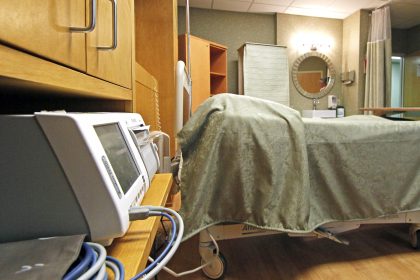Small Business Innovations and Cloud Access Are the Keys to Solving Public Sector Challenges
COMMENTARY

Artificial intelligence, quantum computing and machine learning are bold, revolutionary technologies, so it is easy to assume that big companies alone are leading the way on game-changing approaches to problem solving. In actuality, small businesses are often the power behind innovations that optimize operations, increase productivity, support cybersecurity and enhance customer experiences.
The best outcomes occur when small businesses, many of which are non-traditional government contractors, utilize cloud marketplaces to provide the government with the best commercial innovation to solve public sector problems and enhance digital services for citizens.
The mission of my organization, the Alliance for Digital Innovation, is to streamline the U.S. public sector’s acquisition and adoption of innovative commercial technologies to enhance the efficiency and effectiveness of government services. To ensure the U.S. government is evaluating the best technologies to tackle public-sector problems, it must consider small businesses when awarding government contract dollars or risk not benefiting from innovations from this important sector of the technology community.
While the Small Business Administration works with federal agencies to award 23% of contract dollars to eligible small businesses, SBA Administrator Isabel Guzman has acknowledged that much should be done to ensure all small businesses can get contract-ready and have an opportunity to engage with the U.S. government. She has said that the SBA is “committed to increasing these opportunities and lowering barriers to give our small businesses a chance to grow their revenues through contracting. Our goal … is to make sure that small businesses can be like the giants they are in our economy and to create conditions to guarantee their success.”
Government agencies are working on zero trust initiatives, trying to better utilize machine learning and artificial intelligence, and deploying new cybersecurity technologies. While agencies need the freedom to tailor solutions to their needs, fractured policies and a lack of alignment across the government can limit the impact of these efforts. Engaging with small companies is a great way for agencies to modernize their programs and processes while reducing costs and delivering better service to the public.
Deploying cutting-edge technology to solve real-world problems needs to be incorporated into the government mindset.
Take for example quantum-hybrid technologies, which in some cases can now solve real-world problems. Every citizen felt the pinch of the global supply chain troubles in recent years, and a quantum-hybrid application was developed for the Port of Los Angeles to optimize logistics at Pier 300. This application was built by a small businesses, SavantX, using cloud access to tap into a D-Wave quantum computer, another small business, to increase the amount of cargo moved per crane by 60% and increase trucks’ turnaround time by 12%.
Zero trust technologies are now mainstream, but they are really only a few years old. According to Okta, “Adoption of this modern security framework has more than doubled, with 61% of organizations today saying they have a defined zero trust initiative in place. And another 35% plan to implement one soon.”
Approximately 1,000 companies are involved in quantum computing either directly or across the supply chain, most of which are small businesses. For zero trust architecture companies, while there are some bigger players, smaller companies are blazing the pathway.
One of the ways government can modernize its systems and processes is through the utilization of technology modernization funds and other programs. The Alliance for Digital Innovation has long advocated for Congress to appropriately fund the technology modernization funds, which provide funds for the government to invest in modern cloud technology and zero trust cybersecurity environments.
Another way is for new programs to be established that explicitly direct the government to work with small businesses. For example, the National Defense Authorization Act, which was recently signed into law by President Joe Biden, created a quantum pilot program that pushed the Department of Defense to work with small businesses and non-traditional contractors to develop near-term applications. The Office of Management and Budget this month issued new guidance to federal agencies to increase small business participation on multiple-award contracts.
Small business innovators utilizing cloud-based technologies are a critical part of the solution for the public sector.
These technologies can provide needed solutions for emergency response, electric grid resilience, infrastructure, cybersecurity environments and more. Public sector investment in modern, cloud-based technology and emerging technology is a powerful tool in solving problems facing the United States.
Failure to provide the funding that supports engagement with cloud-based innovations from small businesses will negatively impact the effectiveness and security of the government and its ability to deploy the best solutions to serve the American public.
Ross Nodurft serves as executive director of the Alliance for Digital Innovation, which works to streamline the U.S. public sector’s acquisition and adoption of innovative commercial technologies to enhance the efficiency and effectiveness of government services. They can be reached at [email protected].






















